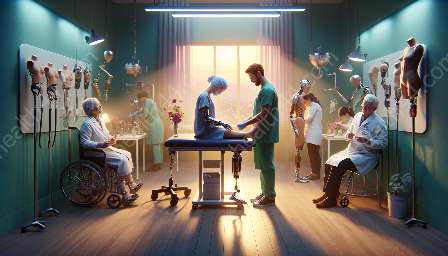Catheters play a crucial role in modern medicine, particularly in the context of prosthetic devices and other medical equipment. This comprehensive guide provides a detailed look at catheters, their use, and their compatibility with prosthetic and medical devices.
Understanding Catheters
A catheter is a flexible tube that can be inserted into a body cavity, duct, or vessel. It serves a wide range of functions, including drainage, administration of fluids or gases, and access for surgical instruments. Catheters are used in various medical procedures to support the normal functioning of organs or to deliver medication directly into specific areas of the body.
Types of Catheters
There are several types of catheters, each designed for specific medical purposes. These include:
- Indwelling Catheters: These are left inside the body for an extended period to drain urine from the bladder. They are commonly used for patients with urinary retention or incontinence.
- Hemodialysis Catheters: These are used to access the bloodstream for hemodialysis treatment in patients with kidney failure.
- Central Venous Catheters: These are inserted into large veins for the administration of medication, fluids, or to measure central venous pressure.
- Cardiac Catheters: These are used to diagnose and treat conditions of the heart and blood vessels, including coronary artery disease and heart valve disorders.
- Urinary Catheters: These are used to drain urine from the bladder, either temporarily or on a long-term basis.
Catheters and Prosthetic Devices
Catheters are closely associated with prosthetic devices, particularly in cases where the normal function of specific organs or body systems is compromised. For example, individuals with limb loss may use prosthetic limbs, and in some cases, catheters may be used to support bladder function by aiding in urine drainage.
Moreover, catheters may also be used in the management of pressure sores that can occur due to prolonged use of prosthetic limbs. By carefully managing bladder and bowel function using catheters, individuals with prosthetic devices can lead more comfortable and active lives.
Catheters and Medical Devices & Equipment
Medical devices and equipment often work in tandem with catheters to deliver optimal care to patients. For example, catheters are frequently used alongside infusion pumps to deliver precise amounts of medication or fluids into the body. Additionally, catheters may be utilized in conjunction with imaging devices such as ultrasound or fluoroscopy to guide their placement during medical procedures.
Furthermore, advancements in medical device technology have led to the development of specialized catheters, such as those equipped with sensors or drug delivery capabilities. These innovative catheters expand the scope of medical treatments and offer more targeted and effective interventions for patients with various medical conditions.
Conclusion
Catheters are indispensable tools in modern medicine, and their compatibility with prosthetic devices and other medical equipment underscores their versatility and importance. Understanding the different types of catheters, their roles in the context of prosthetic devices, and their integration with various medical devices and equipment is essential for healthcare professionals and patients alike.


